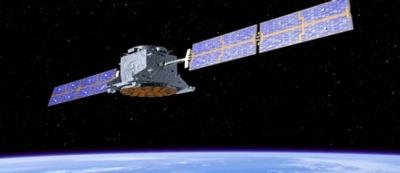Sat, Nov 10, 2018
Looking Into Migration Of The Command And Control System For Over 20 Spacecraft
Kratos Defense & Security Solutions has successfully completed the third phase of a pathfinder study for migrating the Command and Control System – Consolidated (CCS-C) ground system to the Enterprise Ground Services (EGS) architecture. CCS-C currently operates a fleet of over 20 Military Satellite Communications (MILSATCOM) satellites in four different constellations.

In phase 3, Kratos demonstrated the automated deployment of the MILSATCOM EGS (MEGS), using virtualized applications on the Space and Missile Systems Center (SMC)-provided Cooperative Research and Development Agreement (CRADA) Supply Chain Risk Management (SCRM) infrastructure hosted at the Space Management Battle Lab (SMBL). After successful deployment, the team demonstrated Kratos’ web-based user interface and automation capabilities. Traditionally, ground system capabilities take months or even years to deploy and test, however, with automated software deployment and dynamic allocation of resources employed by the Kratos team based on the EGS principles of deploying in a modern IT environment, the demonstration took less than ten minutes. This dynamic allocation of ground resources demonstrates the portability, resiliency and elasticity of the MEGS.
EGS is a critical enabling technology for the Air Force’s Space Enterprise Vision (SEV) focused on a sustainable, resilient space architecture that can respond to emerging threats and protect space-based assets. When implemented, EGS will result in a best of breed, service-based ground architecture for all Air Force spacecraft that will enable Air Force Space Command (AFSPC) to fight and win a war that extends into space. AFSPC is implementing EGS with prototyping activities to mature the concepts, technologies, EGS standards, and transition paths for legacy and future ground systems.
The Kratos study for MILSATCOM is a 27-month effort that consists of four phases and is an essential step in the evolution of CCS-C to exploit the benefits of EGS. Phase 3 concluded on 12 July with a successful demonstration. Phase 4 will be completed in December, 2018.
"This demonstration of phase three illustrates the capability of an EGS environment to be both resilient and elastic," said Larry Lind, Vice President, Kratos Federal Solutions Group. "Kratos’ involvement with EGS goes beyond the CCS-C/EGS interoperability study as we are actively involved in defining and refining the standards that will make EGS a reality.”
(Image provided with Kratos news release)
More News
Aero Linx: Transport Canada We are a federal institution, leading the Transport Canada portfolio and working with our partners. Transport Canada is responsible for transportation p>[...]
Gross Navigation Error (GNE) A lateral deviation from a cleared track, normally in excess of 25 Nautical Miles (NM). More stringent standards (for example, 10NM in some parts of th>[...]
From AirVenture 2017 (YouTube Edition): Flight-Proven Booster On Display At AirVenture… EAA AirVenture Oshkosh is known primarily as a celebration of experimental and amateu>[...]
Aircraft Parachute System (CAPS) Was Deployed About 293 Ft Above Ground Level, Which Was Too Low To Allow For Full Deployment Of The Parachute System Analysis: The day before the a>[...]
Also: 48th Annual Air Race Classic, Hot Air Balloon Fire, FAA v Banning 100LL, Complete Remote Pilot The news Piper PA-18 Super Cub owners have been waiting for has finally arrived>[...]
 ANN's Daily Aero-Linx (06.29.25)
ANN's Daily Aero-Linx (06.29.25) ANN's Daily Aero-Term (06.29.25): Gross Navigation Error (GNE)
ANN's Daily Aero-Term (06.29.25): Gross Navigation Error (GNE) Classic Aero-TV: Anticipating Futurespace - Blue Origin Visits Airventure 2017
Classic Aero-TV: Anticipating Futurespace - Blue Origin Visits Airventure 2017 NTSB Final Report: Cirrus SR22
NTSB Final Report: Cirrus SR22 Airborne Affordable Flyers 06.26.25: PA18 Upgrades, Delta Force, Rhinebeck
Airborne Affordable Flyers 06.26.25: PA18 Upgrades, Delta Force, Rhinebeck



